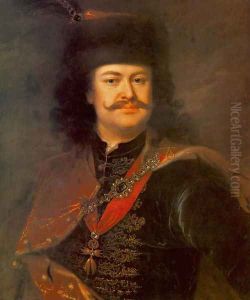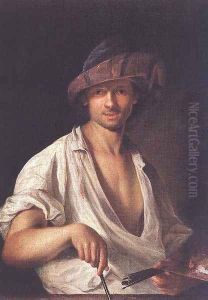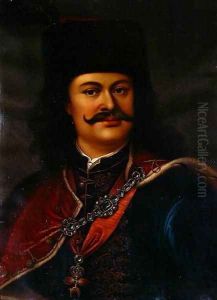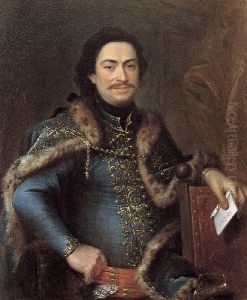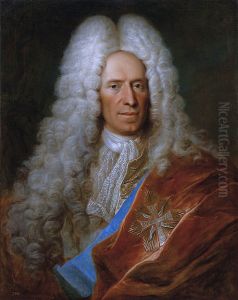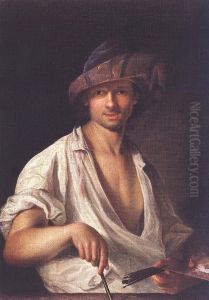Adam Manyoki Paintings
Adam Manyoki was a distinguished Hungarian Baroque painter, recognized for his adept portraits that captured the essence of the high society and nobility of his era. Born in 1673, Manyoki’s life spanned a period of great cultural and political change in Europe, allowing his art to reflect the complexities and the opulence of the Baroque period. His contributions to art are particularly noted for their vivid realism, attention to detail, and the psychological depth he brought to his depictions of his subjects.
Manyoki’s career began to flourish after he moved to Vienna, where he was exposed to the works of contemporary Western European artists. This exposure was pivotal in shaping his artistic style, which combined the grandeur of the Baroque with a uniquely Hungarian sensibility. He was particularly admired for his skill in using light and shadow to enhance the emotional expressiveness of his portraits. Manyoki’s reputation as a portraitist grew, and he soon found himself in the service of the Habsburg court, where he painted portraits of several notable figures, including members of the aristocracy and royalty.
In addition to his court commissions, Manyoki was also a keen observer of the people around him, often painting portraits of his contemporaries, both famous and obscure. His works not only provide a window into the faces of the 18th century but also into the cultural and social dynamics of the time. Manyoki’s ability to capture the personality and stature of his subjects without flattery or exaggeration earned him a lasting place in the annals of European art history.
Adam Manyoki passed away in 1757, leaving behind a legacy of works that continue to be studied and admired for their artistic and historical significance. His paintings are housed in several prestigious collections and museums across Europe, serving as enduring testimonies to his skill and to the rich cultural tapestry of his time. Manyoki’s contribution to the Hungarian and European art scene of the Baroque period remains invaluable, marking him as one of the era’s most important artists.
